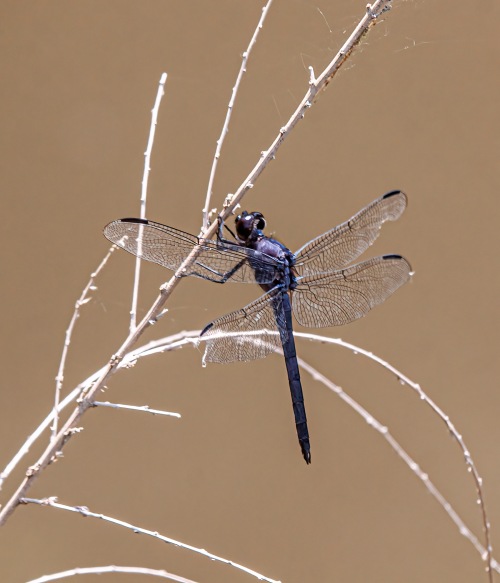Slaty Skimmer dragonflies (Libellula incesta) are probably the most common dragonflies that I see at this time of the year at Jackson Miles Abbott Wetland Refuge. It looks like we will continue have lots more of them in the future, judging from the mating behavior I observed there last Tuesday.
When dragonflies mate, they are in what is known as the “wheel position.” I will spare you all of the anatomical details, but in simple terms the male grasps the female’s head with claspers at the tip of his abdomen and she bends her abdomen forward to complete the circle.
In an article at Thoughtco.com, one author described the process in these words, “Dragonfly sex is a rough-and-tumble affair. If you’ve ever seen a pair of mating dragonflies in the act, you know that their sexual coupling requires the flexibility and acrobatic skill of a “Cirque de Soleil” performer. Females get bitten, males get scratched, and sperm winds up everywhere.” I encourage you to read that article, which is entitled “How Dragonflies Mate,” if you want more information about the strange mating practices of dragonflies, including the fact that “some dragonflies have backward-facing hooks or barbs on their penises, which they can use to scoop out any sperm they find inside their partner before depositing their own.” Yikes!
I think it has been a while since I featured a Slaty Skimmer, so I included a photo of an adult male that I photographed that same day to familiarize you with the “look” of a Slaty Skimmer. The dark bodies and heads of the mature males make them really easy to identify. As is often the case with many species of dragonflies, though, juvenile are a lot tougher to identify, because several local species look quite similar when they are young.
© Michael Q. Powell. All rights reserved.


That last photo is stunning, Mike.
Thanks, Dan. I like the stark white of that vegetation on which the dragonfly is perched and the contrast that it provides with the dark body of the dragonfly.
Very nice Mike! Enjoyed seeing them!
Fabulous capture of the mating, Mike!
I read the How They Mate article, wow, it is really amazing these creatures have survived. I witnessed a joined pair ovipositing as described at the end of the piece this morning, so this was timely.
Thanks, Ellen. When the dragonflies are mating there are body parts extending every which way, so it is a challenge getting an angle of view in which most parts of the dragonflies are in focus. Mating is really rough and towards the end of the season you can see the wear and tear on the bodies of the dragonflies.